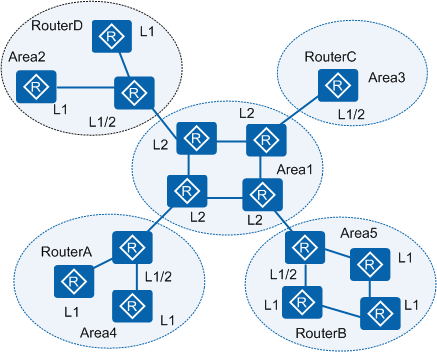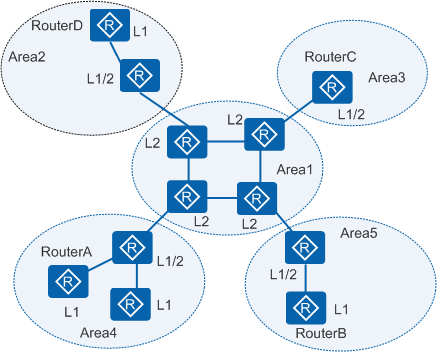IS-IS Administrative Tag
Administrative tags control the advertisement of IP prefixes in an IS-IS routing domain to simplify route management. You can use administrative tags to control the import of routes of different levels and different areas and control IS-IS multi-instances running on the same router.
In Figure 1, RouterA in Area 4 needs to communicate with RouterB in Area 5, RouterC in Area 3, and RouterD in Area 2. To ensure information security, it is required that other routers in Level-1 areas (Areas 2, 3, and 5) should not receive the packets sent from RouterA. To meet this requirement, configure the same administrative tag for IS-IS interfaces on RouterB, RouterC, and RouterD and configure the Level-1-2 router in Area 4 to leak only the routes matching the configured administrative tag from Level-2 to Level-1 areas. This allows RouterA to communicate with only RouterB, RouterC, and RouterD. Figure 2 shows the topology formed on RouterA.
The value of an administrative tag is associated with certain attributes. If the cost-style is wide, wide-compatible or compatible, when IS-IS advertises an IP address prefix with these attributes, IS-IS adds the administrative tag to the TLV in the prefix. The tag is flooded along with the prefix throughout the routing domain.

